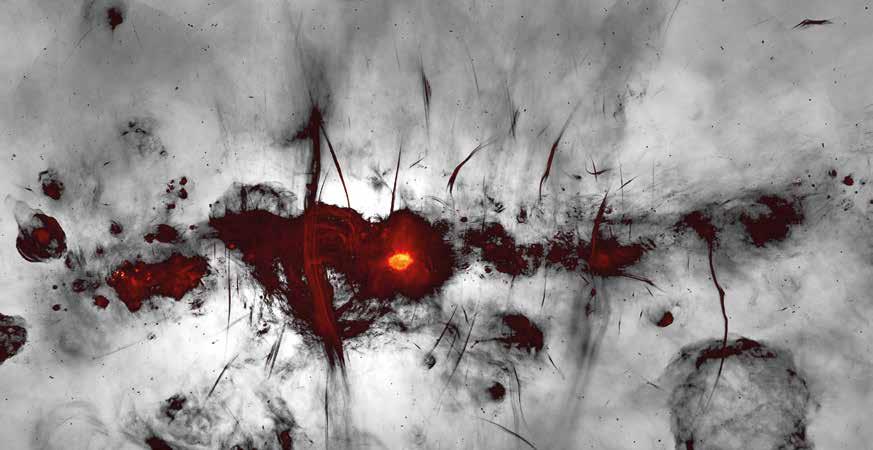
4 minute read
foreword
*Dr Jamal Mimouni is an Algerian astrophysicist and immediate past AfAS president. He holds a B. Sc. in Theoretical Physics (1977) from Algiers University and a Ph. D. in Particle Physics (1985) from the University of Pennsylvania, Philadelphia.
Here we are – year 2019 plus three after the inception of the African Astronomical Society (AfAS) on the ground of the historical SAAO observatory in Cape Town where a new star has risen on the African scene.
Advertisement
AfAS, now a grown-up professional body, has gotten its letters of nobility from its vigorous engagement of the astronomical community, its range of activities, high-level meetings, conferences and workshops. It has also spearheaded outreach efforts on the continent by organising successful observation campaigns, webinars and producing a growing body of documents for the public, translating in a number of languages used in Africa.
Now astronomy has all the reasons in the World to grow up and flourish on our continent; it has incredible instruments like SALT, HESS, and the coming SKA with radioastronomy being the domain of predilection of African science. The MeerKAT radiotelescope is a harbinger of good things to come. All this in addition to the vitality of its fast rising astronomical community. With the start of AfAS's new term and its newly elected executive committee, I am sure AfAS will consolidate its gains and stature at the continental level to face up the coming challenges, not the least of which being the General Assembly of the IAU in 2024 for which we are a key partner, hoping to use this event to help astronomy get its act together and have it established as a flourishing discipline, not a mere exotic branch somehow annexed to physics, but indeed as generalised physics!
African Science Stars with its legacy in science outreach will certainly accompany us as we will continue to work handin-hand in a fruitful synergy. We hope that you will enjoy this edition of magazine and you can read more on the AfAS conference on pages 9 to 11.
Dr Jamal Mimouni
MeerKAT reveals complex heart of the Milky Way
The South African Radio Astronomy Observatory (SARAO) has released a new MeerKAT telescope image of the centre of our Galaxy, showing radio emission from the region with unprecedented clarity and depth. The international team behind the work published the initial science highlights from this image in The Astrophysical Journal.
The image captures radio emission from numerous phenomena, including outbursting stars, stellar nurseries, and the chaotic region around the 4 million solar mass supermassive black hole that lurks in the centre of our Galaxy, 25,000 light-years from Earth. Radio waves penetrate the intervening dust that obscures the view of this region at other wavelengths. MeerKAT’s innovative design, sensitivity, and geographical vantage point have been the keys to producing the remarkable image, which reveals new supernova remnants – the expanding shells of material left behind when massive stars end their lives explosively – including a rare almost-perfect spherical example, and provides astronomers with the best insight yet into the population of mysterious ‘radio filaments’ found nowhere else.
This work represents the culmination of 3 years of detailed analysis of a survey conducted during the telescope’s commissioning phase.

Images clockwise: A rare, almost-perfect spherical supernova remnant that has been discovered at the edge of the MeerKAT mosaic. Numerous compact radio sources are also visible, many of which signpost supermassive black holes at the centres of galaxies far beyond our own. There is also an intriguing tailed radio source visible on the right of the image, which could be an object in our galaxy moving at high speed, leaving a trailing wake. Credit: I. Heywood, SARAO.
The complex, cirrus-like emission from the Galactic centre super bubble dominates this image. This is traversed by the Radio Arc, a complex of many parallel radio filaments. The radio bubble nestles against the diffuse Sagittarius A region in the lower centre of the image. The bright dot near the centre of this region is Sagittarius A*, a 4 million solar mass black hole. This image captures the chaotic complexity of the very heart of our Galaxy. Credit: I. Heywood, SARAO.
In the centre of the image is the supernova remnant G359.1-0.5. To the left is ‘the Mouse’, a runaway pulsar possibly formed and ejected by the supernova event. To the upper right is one of the longest and most famous radio filaments, known as ‘the Snake’. Credit: I. Heywood, SARAO.
MeerKAT is a radio telescope inaugurated in 2018 consisting of 64 antennas spread over a diameter of 8 kilometres in the Northern Cape province of South Africa. It is the most sensitive telescope of its kind in the world and is a precursor to the Square Kilometre Array (SKA) radio telescope, to be built in South Africa and Australia within the coming decade.
The South African Radio Astronomy Observatory (SARAO), a facility of the National Research Foundation, is responsible for managing all radio astronomy initiatives and facilities in South Africa, including the MeerKAT telescope, and the geodesy and VLBI activities at the HartRAO facility. SARAO also coordinates the African Very Long Baseline Interferometry Network (AVN) for the nine SKA partner countries in Africa, as well as South Africa’s contribution to the infrastructure and engineering planning for the SKA. To maximise the return on South Africa’s investment in radio astronomy, SARAO is managing programmes to create capacity in radio astronomy science and engineering research, and the technical capacity required to support site operations. 8 African Science Stars Issue 3 | www.assap.co.za










